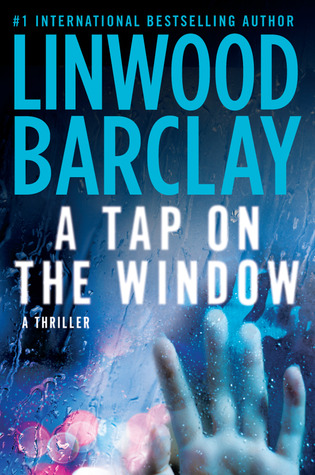A Tap On The Window is Linwood
Barclay’s most riveting page-turner to date. Guaranteed to keep you up long
past your bedtime, it covers all the familiar Barclay territory--a hapless
middle-aged protagonist, a missing-persons case that morphs into something
devious, and family relationships that are on the rocky side of normal. But
Barclay has a genius for taking the familiar and turning it into a fun-house
mirror of surprises, and aspiring suspense writers would do well to take notes.
For
starters, we can relate to Barclay’s protagonist. Cal Weaver is an ordinary,
middle-aged guy who does something monumentally stupid one night: he picks up a
rain-drenched teenage girl hitch-hiking outside a bar. He had a good excuse; at
least he thought so at the time. She knew his son, who had died two months
earlier in a tragic accident. Like any bereaved parent, he’s grappling with the
question Why? and he hopes Claire can provide some answers. From that point
on, we’re on his side.
Backstory
is dropped in, bit by tantalizing bit, and gradually we discover things are
even worse than they seem. This rachets up the suspense and keeps us glued to
the page.
But it’s
Barclay’s use of dialogue that keeps this thriller moving at a furious pace.
For starters, there’s a one-page prologue that is pure dialogue. No tag
lines—we don’t even know who’s talking—but it kicks the suspense quotient into
gear right from the get-go. Entire chapters are dialogue, interspersed with
inner dialogue that is just as good. This keeps the tension at the boiling
point.
Barclay
has a distinctive voice, expressed through the first-person point of view of
Cal Weaver. Most of the story is told from this point of view, but he
introduces another voice in Chapter Four. Written in third-person omniscient
point of view, it is detached and creepy. He inserts it every so often
throughout the novel, whenever the previous chapter ends on a cliff-hanger.
It’s all about building suspense.
In addition
to cliff-hanging endings, Barclay knows how to open a chapter as well. No
boring weather details or reams of description.When he does use description, he
makes it do double-duty. For instance, when he is describing Claire, we see her
rain-drenched hair bathed in the eerie glow of a neon beer sign outside
Patchett’s Bar. We get character, mood and setting all rolled into one.
I have
just one niggling criticism of this novel. It is Barclay’s darkest book yet,
full of grief and tragedy. It’s difficult emotional territory, and I think
Barclay missed it by a hair. For a guy who’s supposed to be thinking of his
dead son all the time, Cal Weaver seems to get sidetracked too easily. In terms
of plot and suspense, the ending is pitch perfect, but it didn’t leave me
emotionally satisfied. That aside, if you are looking for a roller-coaster of a
thriller, take this one for a ride.
 |
| Rita reading one of her stories at CJ's Cafe |
Rita Bailey is a Hamilton writer currently
working on a historical fiction novel, set in Dundas during the Rebellion of
1837. When gardening season arrives, she writes a garden column for the
Hamilton Mountain News and tends her heritage tomatoes. A fan of mystery novels since her Nancy Drew days, she
is addicted to reading anything with dead bodies.
See Brian Henry’s schedule here, including writing workshops and creative writing
courses in Barrie, Brampton, Bolton, Burlington, Caledon, Cambridge,
Georgetown, Guelph, Hamilton, Kingston, London, Midland, Mississauga,
Newmarket, Orillia, Oakville, Ottawa, Peterborough, St. Catharines,
Stouffville, Sudbury, Thessalon, Toronto, Algoma, Halton, Kitchener-Waterloo,
Muskoka, Peel, the GTA, Ontario and beyond.


Great book and a great review
ReplyDeleteGord Miller